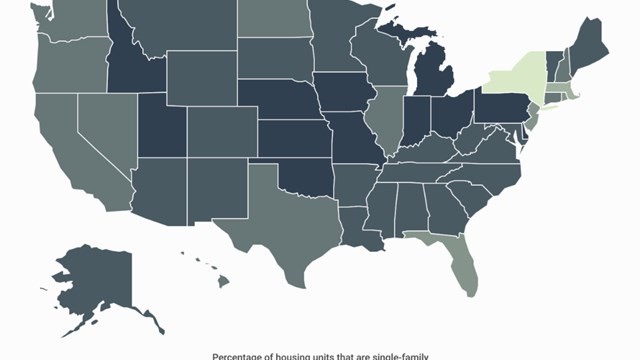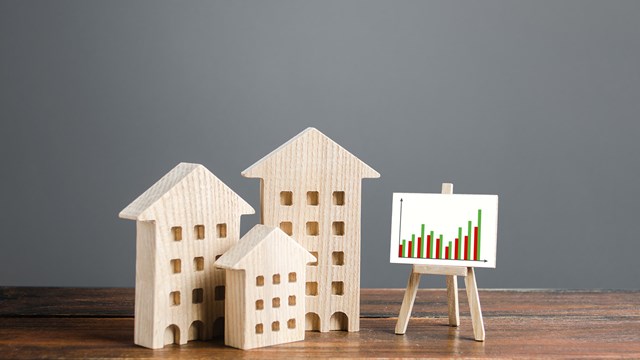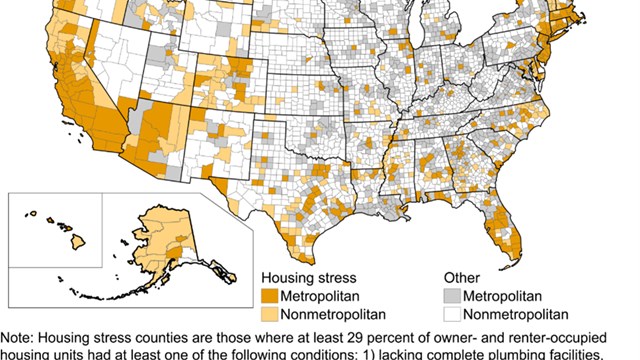
According to many observers, the worst of the recession is over. We’re now several years out from the collapses and near-collapses of Lehman Brothers, Washington Mutual, Countrywide, Bear Stearns, AIG and other big-name financial firms.
Even if the acute bloodletting has passed however, are we back to pre-recession levels of prosperity? Layoffs continue—last December, Citibank announced it would lay off 11,000 workers. Unemployment figures go up and down. And, more to the point, has the real estate industry—especially the co-op and condo market—truly recovered yet?
What’s the general mood of the industry? There are many kinds of co-ops and condos, from the four-story building in Staten Island to the luxury towers of Midtown and Downtown Manhattan. But is there something that unites them all? One factor to take into account may be that New York never felt the effects of the recession as deeply as much of the rest of the country—demand for real estate here always remained strong. Perhaps for this reason, professionals are generally optimistic.
“As we enter 2013, we have certainly hit the point of “post-recession,” and prices are expected to increase for the foreseeable future,” says Seth Hirschhorn, senior managing director of Citi Habitats. “The New York real estate market continues to surprise even analysts. The total number of transactions has continued to increase throughout 2012, despite the continued shaky economy and a chronic lack of inventory.”
Kathy Braddock, co-founder of Rutenberg Realty, says, “The market has been very steady, and I see solid demand for property. Loans are still much harder to get—but with the right help, and good credit, they are being done.”
The general state of the economy impacts different segments of the market in different ways. Kirk Henckels is vice president and director of Stribling private brokerage, which specializes in sales of $5 million and up. “For the foreign buyers who are driving a lot of trophy purchases, we look rock solid,” he says. “Obviously, a New York buyer is looking at it relative to the U.S. economy, and we don’t look that strong.”
For many of these same upper-market buyers, the last presidential election prompted a wait-and-see attitude, with buyers fearing tax increases (the end of the much-discussed “Bush-era tax cuts”) and a rise in the capital gains tax. Some rushed to finish deals by the end of the year. But that wasn’t true for others. Indeed, many renters decided to enter the home ownership market during the past year, says Hirschhorn. “With rising rents, many people have discovered that home ownership makes a lot of sense—especially with interest rates at historic lows,” he said.
The Impact of Sandy
The election wasn’t the only item making big news last year. It was rivaled by Superstorm Sandy, one of the worst natural disasters since Hurricane Katrina in 2005. Some areas, including most of Manhattan above 14th Street, had only minimal damage—but others, such as Gerritsen Beach and Breezy Point in Queens, were devastated.
Rich Schulhoff, chief executive officer of the Brooklyn Board of Realtors, says, “We’ve had to remove almost 100 of our listings because of damage or properties being almost completely destroyed.” Red Hook, he says, “was the new hot area in Brooklyn” before the storm, but it was hit very hard. For example, the Fairway grocery store there had to undergo months of construction due to heavy flood damages, and only reopened at the beginning of March.
“The storm delayed many closings,” says Hirschhorn. “Inspections needed to be done on all properties that were located in high-risk flood areas before banks would give clearances to close.” While some people’s dream may still be a beachfront condo in Brighton Beach or suburban Long Beach, Long Island, others may now think twice.
Slowly But Surely
Sandy aside, some professionals don’t feel that the boom market of the early 2000s is anything they would want to return to. “The early ‘00 was a free-for-all,” says Braddock, “Very unhealthy. And now we know why. Money was being loaned without people taking responsibility for being sure [borrowers] were qualified. That created a frenzy in the market.”
Whatever the cause in the drop in the market, it seems to be recovering slowly but surely. Schulhoff says that in Brooklyn, prices are about 8 to 10 percent down from what they were at the height of the market, which he puts at 2007. “But since 2011, he said, “they’ve gone up 3 to 4 percent.”
Still, while prices have recovered in New York City to levels not far from the peaks seen at the top of the market, says Michael Slattery, senior vice president of the Real Estate Board of New York (REBNY), there’s another factor. “The number of sales has not reached the same level as the mid-00s,” he says.
As is often the case, the top echelon of the market is once again outperforming all the others. “Trophy properties have far exceeded what they were in the pre-Lehman [collapse] days, when the top price per square foot was a little over $6,000,” says Henckels. “Now we’re seeing multiple deals over $10,000 a foot. Basically, the foreigners broke the glass ceiling.”
Summing up, Hirschhorn says, “Prices will not remain this low for too long as long as interest rates remain at the current levels. We are already seeing prices for both co-ops and condos. The window of opportunity to get a great deal on an apartment is closing rapidly.”
What Are They Looking For?
What exactly are today’s co-op and condo buyers looking for, in terms of amenities, preferred neighborhoods and preferred type of unit? There seems to be little doubt that there are more co-ops than condos in the city, both because of a boom in co-op construction in the ’60s and ‘70s, and the frenzy of rental-to-co-op conversions in the ‘80s. Thus, says Slattery, through the first three quarters of 2012, there were 5,295 co-op sales in Manhattan compared to 4,315 condo sales.
“For most,” says Braddock, “condos seem to be their first choice because of ease of purchase. But they are more expensive than co-ops. And our market is still about 80 percent coops.”
But when new apartment buildings are constructed nowadays, if they’re not rentals, they’re almost certainly condos, so condos are catching up rapidly.
In the future, Henckels believes, even though the condo market will gain market share, “There will always be a desire of for the old-world charm of the co-ops, especially since they have begun to allow purchases in the name of a trust.”
What about amenities? Let’s begin with the upper end of the market, which, as Henckels has said, is often driven by well-heeled foreign buyers. “The foreign buyer is looking for a full-service concierge a la carte maid service, valet parking—the whole nine yards,” he says. “A local New Yorker with a family wants a family-oriented building. They do want a doorman, but also an exercise room, a bike [storage] room, a playroom.”
Popular features in condos and co-ops among all buyers include laundry facilities either on site or in the apartments; an on-site gym, spa or fitness room (one condo, the Oro in Brooklyn, even has a basketball court); and private, secure storage space.
Looking forward, professionals say that the tried-and-true areas, such as the Upper East Side, the Upper West Side, Greenwich Village, the East 50s in Midtown, Brooklyn Heights and Park Slope, will still retain value and continue to be good investments.
Asked about up-and-coming areas, Braddock says Astoria and Long Island City are both gaining in popularity. Schulhoff, understandably, boosts Brooklyn: “Brooklyn has become almost like the left bank of Paris.” To find out which Brooklyn areas will be hot, he says, “Look for where the new restaurants are opening. Many new restaurants opened 12 or 15 years ago in Lower Manhattan, and look how prices are skyrocketing there.”
When there is new demand, there will also be new development. “2012 was the turning point for applications being filed with the city,” says Hirschhorn. “We have our confidence back and it’s a great thing. Banks are more optimistic as condominiums are in high demand, and some projects are fetching north of $2,000 per square feet in certain high-end buildings.”
“Lots of projects are in the works, a lot more are planned,” adds Henckels. “We came close to paralysis after the Lehman collapse, but we’re back in the swing again. We needed the `shadow inventory,’ but that all worked out very nicely.” Currently there are several condo buildings under development, including 250 East 57th St., 211 East 13th St., The Printing House at 421 Hudson St., The Toy Building at 1107 Broadway, 388 Bridge St. in Brooklyn, to name a few.
Regardless of what happens, the city will still be a magnet for apartment seekers. There is only one Big Apple, with its museums, parks, sports venues, concerts and Broadway shows. People who pay high prices to live here understand in the main that they’re paying for location as well as for the unit itself. New Yorkers, on the whole, have stopped moving to the suburbs because our quality of life has improved dramatically beginning around the 1990s. And well-heeled foreign buyers continue to see New York condos as a good investment.
In the past, many apartment buyers insisted on Manhattan. Nowadays, some, especially those who are seeking value, are willing to endure a short commute and live in parts of Brooklyn and Queens that have world-class attractions of their own, like the Williamsburg art scene, the Museum of the Moving Image or the Brooklyn Heights Promenade.
Whatever happens, the consensus is that the worst is over.
Raanan Geberer is a freelance writer and a frequent contributor to The Cooperator.






Leave a Comment